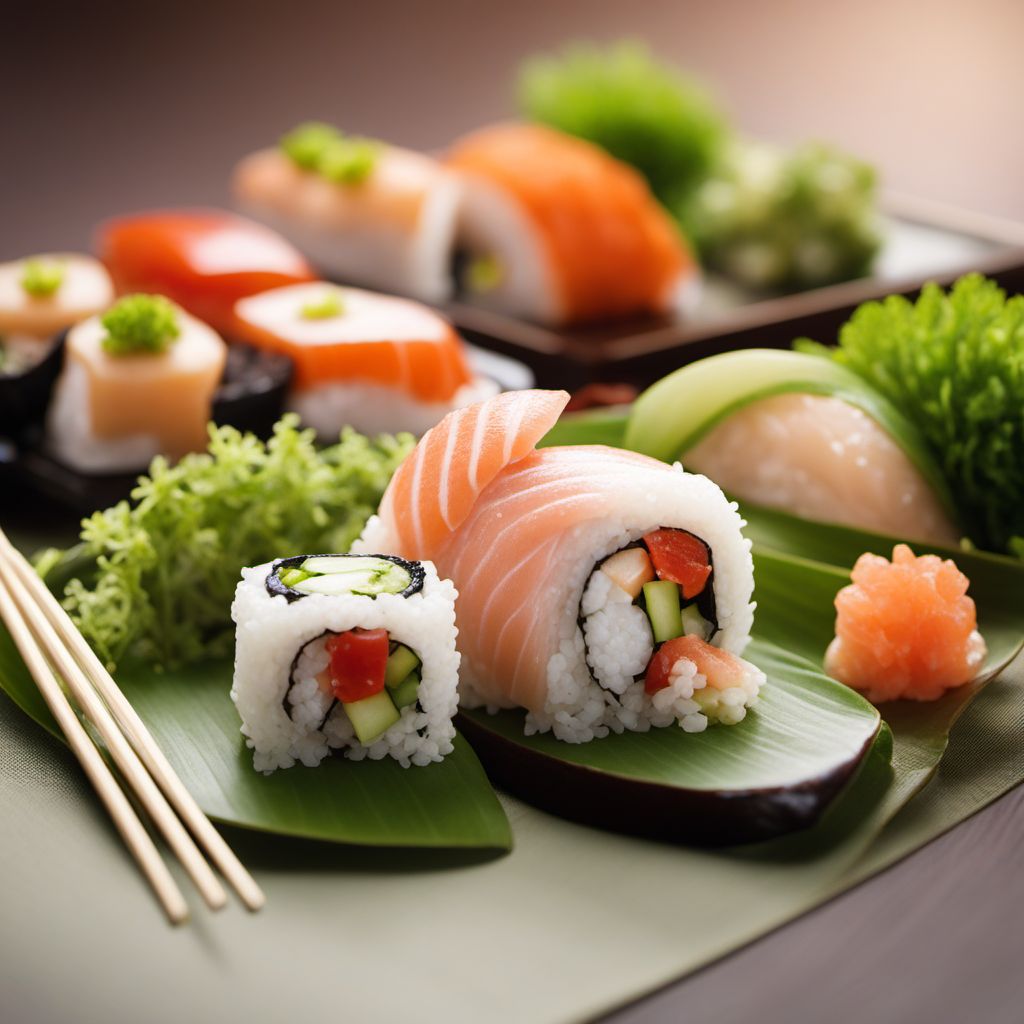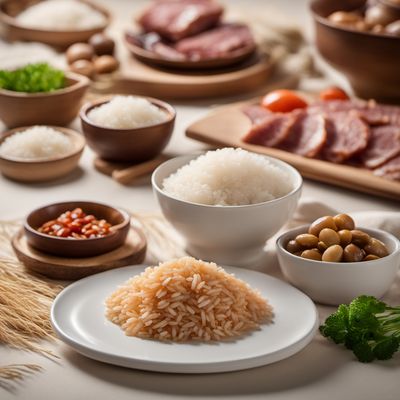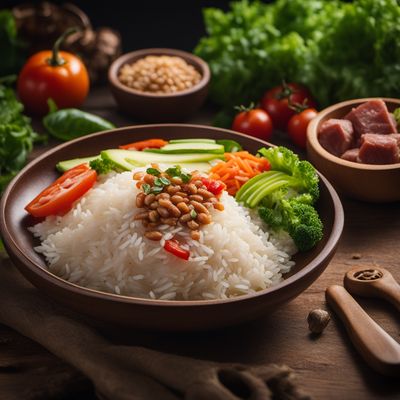
Ingredient
Rice, fish/seafood and vegetable based dishes
A Symphony of Flavors: Exploring the Delights of Rice, Fish/Seafood, and Vegetable Based Dishes
Rice, fish/seafood, and vegetable based dishes offer a diverse range of culinary experiences. Rice, a staple grain in many cuisines, provides a neutral base that complements the vibrant flavors of fish/seafood and vegetables. The combination of tender fish or succulent seafood with fresh, crisp vegetables creates a delightful contrast in textures. These dishes can be prepared in various ways, such as stir-frying, steaming, or simmering, allowing for endless creativity in the kitchen. The result is a symphony of flavors that satisfies both the palate and the body.
Origins and history
Rice, fish/seafood, and vegetable based dishes have roots in numerous cultures around the world. In Asian cuisines, such as Japanese, Chinese, and Thai, rice has been a dietary staple for centuries. Fish and seafood have played a significant role in coastal regions, providing a valuable source of protein and essential nutrients. Vegetables, with their abundance of vitamins and minerals, have been cultivated and incorporated into dishes across continents. The combination of these ingredients reflects the culinary traditions and cultural heritage of each region.
Nutritional information
These dishes offer a balanced nutritional profile, providing a combination of carbohydrates from rice, protein from fish/seafood, and an array of vitamins, minerals, and fiber from the vegetables. They are generally low in fat and calories, making them a healthy choice for those seeking a nutritious meal.
Allergens
Fish/seafood based dishes may pose allergenic risks for individuals with seafood allergies. It is important to be cautious and considerate of potential allergens when preparing or consuming these dishes.
How to select
When selecting ingredients for rice, fish/seafood, and vegetable based dishes, opt for fresh, high-quality produce and sustainably sourced fish or seafood. Look for firm, glossy fish fillets or whole fish with clear eyes and a fresh, oceanic smell. Choose vegetables that are vibrant in color, with no signs of wilting or browning. Additionally, consider purchasing organic or locally sourced ingredients to support sustainable farming practices.
Storage recommendations
To maintain the freshness and quality of the ingredients, store rice in a cool, dry place in an airtight container. Fish or seafood should be consumed as soon as possible after purchase, but if necessary, store it in the refrigerator on ice and use within a day or two. Vegetables should be stored in the refrigerator, preferably in the crisper drawer, to retain their freshness. It is best to consume them within a few days of purchase.
How to produce
To produce rice, fish/seafood, and vegetable based dishes at home, start by cooking rice according to the package instructions or using a rice cooker for optimal results. For fish or seafood, ensure it is properly cleaned and seasoned before cooking. Vegetables can be prepared by washing, peeling, and cutting them into desired shapes. Follow recipes or experiment with different cooking techniques, such as stir-frying, steaming, or baking, to create your own delicious dishes.
Preparation tips
When preparing rice, follow the instructions on the package for the specific type of rice you are using. For fish or seafood, marinating or seasoning before cooking can enhance the flavors. When stir-frying, ensure the pan or wok is hot before adding the ingredients to achieve a delicious sear. Steaming fish or seafood with vegetables can help retain their natural flavors and nutrients. Experiment with different combinations of spices, herbs, and sauces to create unique flavor profiles.
Culinary uses
Rice, fish/seafood, and vegetable based dishes are incredibly versatile and can be found in various cuisines worldwide. They are commonly used in sushi, paella, fried rice, seafood stir-fries, fish curry, and vegetable rice bowls, among many other dishes. The combination of these ingredients allows for endless creativity in the kitchen, making them a favorite choice for chefs and home cooks alike.
Availability
Rice, fish/seafood, and vegetables are widely available in most regions and can be found in grocery stores, supermarkets, and farmers markets. The specific varieties and types of fish or seafood may vary depending on the proximity to coastal areas.
More ingredients from this category

Rice and meat meal
Savory Rice Delight

Paella
The Iconic Spanish Delight: Paella

Risotto
Creamy Delight: Unveiling the Magic of Risotto

Dolma
Delightful Stuffed Goodness

Nasi goreng
"Indonesian Delight: Exploring the Flavors of Nasi Goreng"

Rice pudding
Creamy Delight: Exploring the World of Rice Pudding

Rice and vegetables meal
Harmony on a Plate: Rice and Vegetable Medley

Rice, meat, and vegetables meal
Wholesome Harmony: A Nutrient-Rich Medley of Rice, Meat, and Vegetables

Milk rice
Creamy Delight: Exploring the Richness of Milk Rice